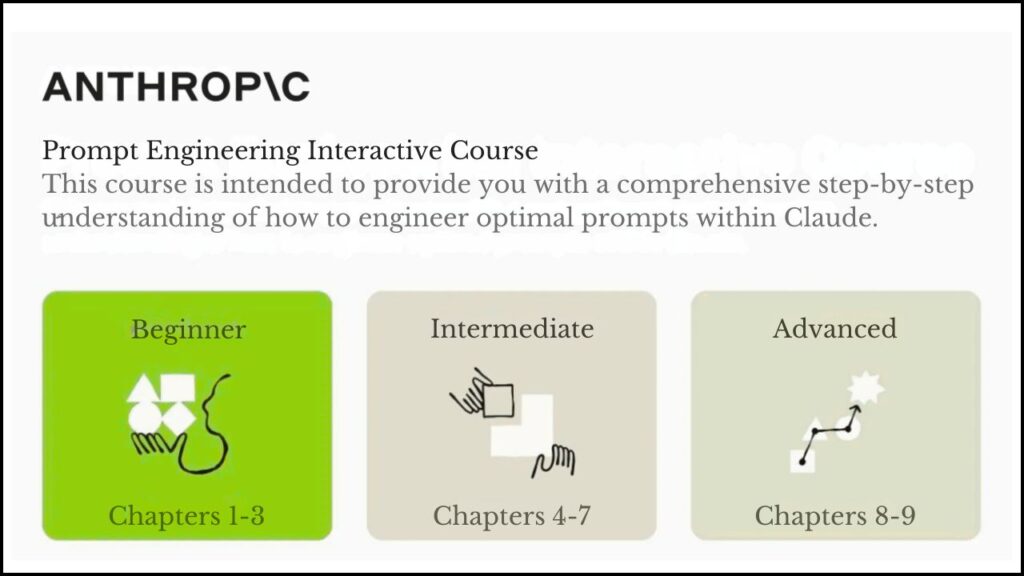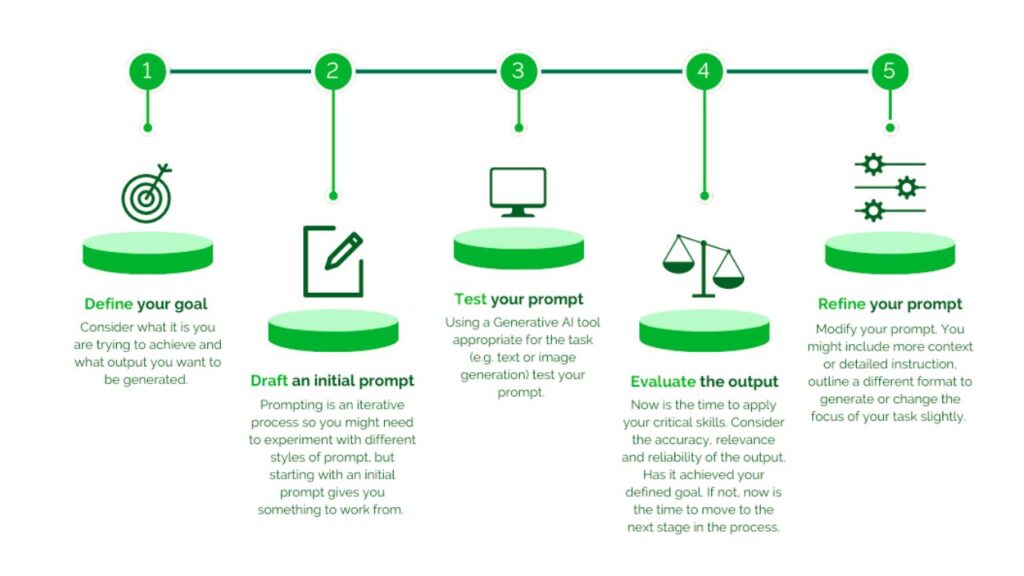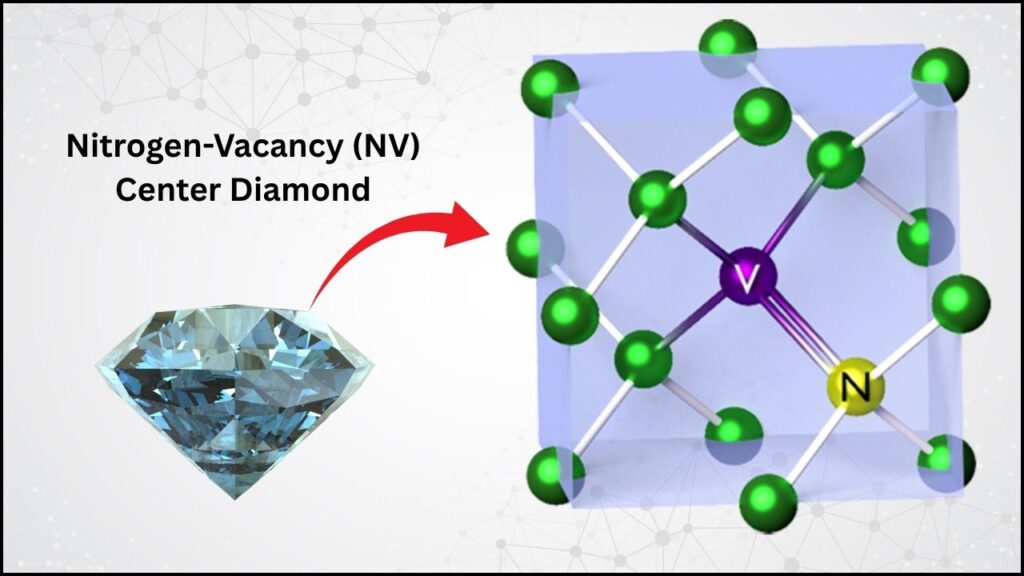Prompt engineering—the skill of crafting clear, effective instructions for AI systems—is revolutionizing how we interact with technology. Anthropic’s Interactive Prompt Engineering Tutorial is the most comprehensive, hands-on, and accessible resource for anyone who wants to get great results from Claude, one of the world’s leading AI language models. Whether you’re a student, educator, business professional, developer, or just curious, this guide gives you the tools, techniques, and confidence to master AI prompting—from the basics to advanced workflows.

AI models like Claude are powerful, but they need clear guidance to deliver useful, reliable results. Think of Claude as a brilliant new employee—one who can accomplish amazing things, but needs explicit, well-structured instructions to do so. The better your prompts, the better Claude’s responses. Prompt engineering is not about programming, but about clear communication—an essential new literacy for the digital age.
Table of Contents
Anthropic’s Complete Guide to Prompt Engineering
| Topic | Description |
|---|---|
| Interactive Tutorial Format | Hands-on lessons in GitHub Jupyter notebooks and Google Sheets; structured for practice and experimentation |
| Who Is This For? | Beginners, educators, business professionals, developers, students (ages 10+)—anyone interested in AI communication |
| Core Skills Covered | Basic structure, common pitfalls, troubleshooting, advanced techniques, prompt chaining, formatting, tool integration |
| Model Focus | Claude 3 Haiku (demo), concepts apply to Claude 4 (Sonnet, Opus) and most AI chatbots |
| Number of Chapters | 9 core chapters + advanced appendix |
| Career & Professional Value | In-demand skill for AI researchers, prompt engineers, content creators, product managers |
| Best Practices | Be explicit, provide context, use examples, assign roles, chain prompts, control output, explain reasoning |
| SEO Focus | Prompt engineering, Claude, AI prompting, how to write AI prompts, best practices, interactive tutorial |
Prompt engineering is the key to unlocking the full potential of AI assistants like Claude. Anthropic’s Interactive Prompt Engineering Tutorial makes this essential skill accessible to everyone—students, teachers, professionals, and lifelong learners. By following the best practices and hands-on exercises in the guide, you can save time, reduce frustration, and achieve better results—whether you’re helping with homework, building a business, or exploring creative projects.
Why Prompt Engineering Matters
Prompt engineering is the bridge between human intention and AI capability. It’s not just for tech experts—anyone who uses AI tools can benefit. Clear, well-structured prompts help you get accurate answers, creative content, personalized recommendations, and even automated workflows—whether you’re helping with homework, building a chatbot, writing marketing copy, or debugging code.

Claude (and similar AI models) can perform a vast range of tasks, but only if you know how to ask. Vague, confusing, or incomplete prompts lead to vague, confusing, or irrelevant results. Great prompt engineering means you get exactly what you need, every time.
How to Think About Claude and AI Prompts
Claude is not human—it doesn’t infer intent, remember previous conversations (unless told to), or guess what you “really” want. Think of Claude as a brilliant but forgetful assistant: you need to explain your goals, define success, and give clear instructions—just as you would when training a new team member or teaching a child a new skill.
Prompt engineering is about making your instructions explicit, specific, and actionable. The best prompts are concise yet complete, set clear expectations, and include examples, context, and formatting guidance.
A Step-by-Step Guide to Writing Great Prompts for Claude
1. Start With a Clear Goal
Define what success looks like. What do you want Claude to do? Summarize a document? Answer a question? Write a story? Generate code? The clearer your objective, the easier it is to write a good prompt.
Example:
Instead of “Write about climate change,” try “Summarize the main causes of climate change in three sentences, using simple language for a 10-year-old audience.”
2. Be Explicit and Specific
Claude does best with direct, detailed instructions. Don’t assume it knows your style, preferences, or the context behind your request. Tell it exactly what you want—including tone, format, and any “do not” rules.
Example:
Instead of “Explain fractions,” try “Explain what a fraction is, give a simple example with numbers, and then write two practice problems. Use a friendly, encouraging tone.”
3. Provide Context and Background
Claude performs better when it understands the “why” behind your request. Give it relevant background information, explain the purpose of your task, or describe the intended audience. This helps Claude tailor its response.
Example:
“I am a seventh-grade math teacher. Please help me explain fractions to my students in a way that is easy to understand and engaging.”
4. Use Examples (Few-Shot or Multi-Shot Prompting)
Show Claude what you want by providing examples. If you want a quiz, include a sample question and answer. If you want a story, start the story and ask Claude to continue.
Example:
“Here’s a practice math problem: 3/4 + 1/2 = ?. Please solve this problem, showing your work, and then write two more problems like this.”
5. Assign a Role or Persona
Claude can “be” anyone you need: a tutor, a business consultant, a science writer, a friendly chatbot, or even a character from a story. Setting a role helps Claude adopt the right tone, vocabulary, and perspective.
Example:
“You are a science teacher. Explain photosynthesis to a group of fifth graders, using simple words and colorful examples.”
6. Control Output Formatting
Tell Claude how you want your answer: a list, a table, a paragraph, a dialogue, a script, or even XML/JSON if you need structured data. This ensures consistency and makes the output easier to use.
Example:
“List three reasons why recycling is important, each in one short sentence.”
7. Ask for Step-by-Step Reasoning (Chain of Thought)
Encourage Claude to show its work—especially for math, logic, or complex explanations. Ask for intermediate steps, explanations, or justifications. This leads to more transparent, trustworthy, and accurate answers.
Example:
“Show your work as you solve this math problem. Explain each step, don’t skip anything.”
8. Chain Prompts for Complex Tasks
Break big tasks into smaller steps. Use the output of one prompt as input for the next. This is especially useful for multi-part projects, research, or content generation.
Example:
First, “Summarize this article in one paragraph.”
Next, “Explain the main idea to a 10-year-old.”
9. Prefill Claude’s Response (Guide the Output)
Start Claude’s answer for it to set the tone, structure, or style you want. This can help reduce unwanted chatty introductions or meandering explanations.
Example:
“Here’s how the story begins: Once upon a time, in a small village surrounded by mountains, there lived a curious rabbit named Rosie. Continue the story in the same friendly, adventurous style.”
Interactive Learning: Practice Is Essential
Anthropic’s tutorial is designed for real-time practice. Each chapter comes with exercises, example playgrounds, and answer keys—so you can experiment, see what works, and gradually build confidence and skill.
The tutorial is free, easy to use, and works directly inside your browser or Google Sheets. You don’t need to be a programmer to benefit—just a willingness to learn and try new things.
Prompt Engineering for Real-World Applications
Prompt engineering isn’t just a tech skill—it’s a career asset and a life skill for the AI era.
- Education: Teachers can create quizzes, lesson plans, and study guides in minutes.
- Business: Write better emails, reports, and marketing copy; automate customer service and data analysis.
- Creative Writing: Generate story ideas, outlines, and drafts; brainstorm for blogs, scripts, or songs.
- Coding and Tech: Debug code, write documentation, generate examples, and explain technical concepts.
- Everyday Life: Get homework help, plan meals, organize schedules, and research topics in seconds.
Prompt engineering is the new digital literacy—just as essential as typing, Googling, or using a smartphone.
Advanced Techniques and Best Practices
Anthropic’s engineers and Claude’s most successful users follow these pro tips to get the absolute best results:
- Be explicit and direct: The more precise your instructions, the better the results.
- Provide context and motivation: Explain why you’re asking and what you’ll do with the answer.
- Use high-quality examples: Show Claude what “good” looks like.
- Assign clear roles: Tell Claude who it’s supposed to be.
- Control output formatting: Specify how you want your answer structured.
- Chain prompts for complex tasks: Break big jobs into manageable steps.
- Prefill responses: Guide Claude’s output for consistency.
- Always ask for step-by-step reasoning: This improves transparency and accuracy.
- Iterate and test: Refine your prompts through practice and feedback.
Apple May Tap Anthropic or OpenAI to Reinvent Siri—A Big Shift From Its On-Device AI Strategy
Amazon Teams Up With Anthropic to Build an AI Super Hub With New Data Centers
Kimi K2: The Open-Source AI Sensation That’s Reshaping the Global AI Race
FAQs About Anthropic’s Complete Guide to Prompt Engineering
Q: Do I need to be a programmer to learn prompt engineering?
No. Prompt engineering is about clear communication, not coding. The tutorial is accessible to anyone—no technical background is required.
Q: How long does it take to get good at prompting?
Like any skill, it improves with practice. Start with simple prompts, experiment, and gradually tackle more complex tasks. The interactive tutorial makes it easy to learn at your own pace.
Q: Are these techniques only for Claude, or do they work with other AIs?
The core principles apply to ChatGPT, Gemini, and most modern AI language models. Each system has unique quirks, but the fundamentals of clear, explicit, and structured prompting are universal.
Q: Is the guide appropriate for younger learners?
Yes! The concepts and examples are explained simply. With a little guidance, students as young as 10 can understand and apply these techniques.
Q: Is there a cost to using the tutorial or Claude?
The interactive tutorial is free. Claude 3 Haiku, used in the tutorial, is also free for experimentation. Advanced models (Sonnet, Opus) may require a subscription.



















